Outreach Team News
-
Trends in IPM: A commentary from an IRAC perspective
This short paper outlines the IRAC International position on trends in Integrated Pest Management (IPM) in relation to insect resistance management. Though IPM is not IRAC International’s primary expertise, IRAC will, where appropriate, seek to enable the dissemination of information on IPM options developed by research institutions, academia, or government agencies for certain crop-pest situations through our outreach channels. IRAC International encourages IPM in the context of resistance management (RM).
-
Latest updates to the MoA Classification (version 11.3)
Nonanoic acid has been added to MoA Group UNE (Botanical essence including synthetic, extracts and unrefined oils with unknown or uncertain MoA)
The updated resources, available for download from the IRAC website, are:
-
Pest MoA Posters Updated to correspond with the latest MoA Classification
The updated posters using the information from the latest version of the MoA Classification (Version 11.2, January 2025) and covering Lepidoptera, Sucking Pests, Mites, and Mosquitoes can be downloaded using the embedded links
-
Latest updates to the MoA Classification (version 11.2)
New versions (11.2, August 2024) of the IRAC MoA resources have been released and posted on the website. The changes include the following updates:
- Group 37: A new MoA Group which has been named “Vesicular acetylcholine transporter (VAChT) inhibitors”.
- Group 37: Oxazosulfyl has been moved from Group UN to the new Group 37.
- Group UNE: Sabadilla Extract has been classified as “Botanical essence including synthetic, extracts and unrefined oils with unknown or uncertain MoA”
- Group UNM: Polydimethylsiloxane (PDMS) has been classified as “Non-specific mechanical and physical disruptors”
- Group 35: Vadescana has been classified as “RNA Interference mediated target suppressor” in the MoA Classification under Appendix 6 as pending registration.
- Group UNM: Perlite has been classified as a “Non-specific mechanical and physical disruptor” in the MoA Classification under Appendix 6 as pending registration.
The updated resources, available for download from the IRAC website, are:
-
IRAC Nematicide MOA Classification Poster presented at the 53rd Annual Meeting of the Organization of Nematologists of Tropical America (ONTA) , Cairo, Sept 2023
As part of continued awareness efforts, the IRAC Nematode WG Poster “THE IRAC INTERNATIONAL MODE OF ACTION CLASSIFICATION SCHEME FOR NEMATICIDES” was presented at the 53rd Annual Meeting of the Organization of Nematologists of Tropical America (ONTA) held jointly with the Egyptian Society for Agro-Nematology (ESAN) annual meeting in Cairo, Egypt from 24 to 29 September 2023. Over 80 nematologists, mainly from North & Central America, Europe, the Middle-East and Africa, attended the meeting. The poster was well received and it was an ideal opportunity to raise awareness of the work of the IRAC International Nematode WG and to encourage those attending to reference the work and act as advocates for using such schemes in crop protection labelling in their countries.

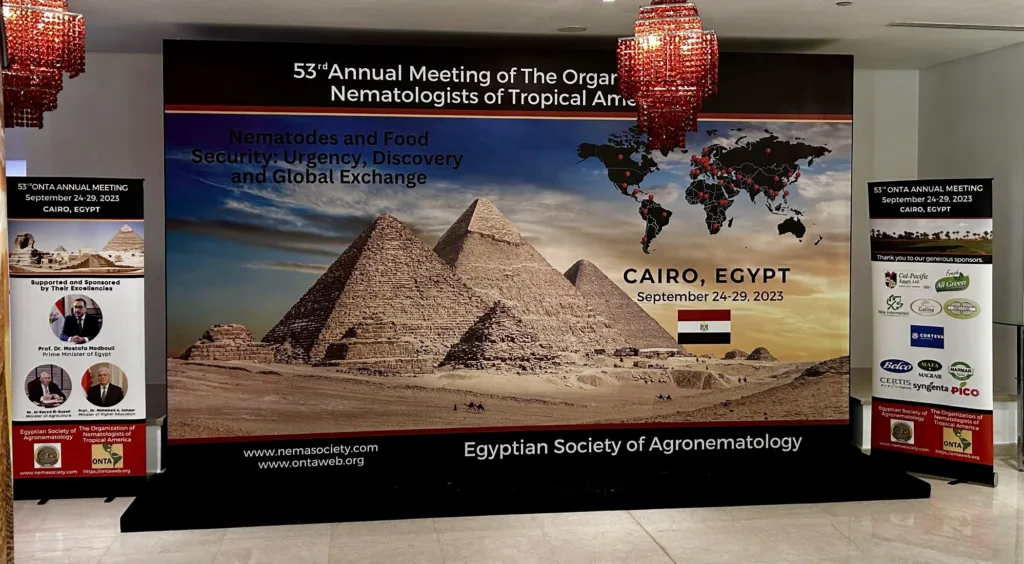
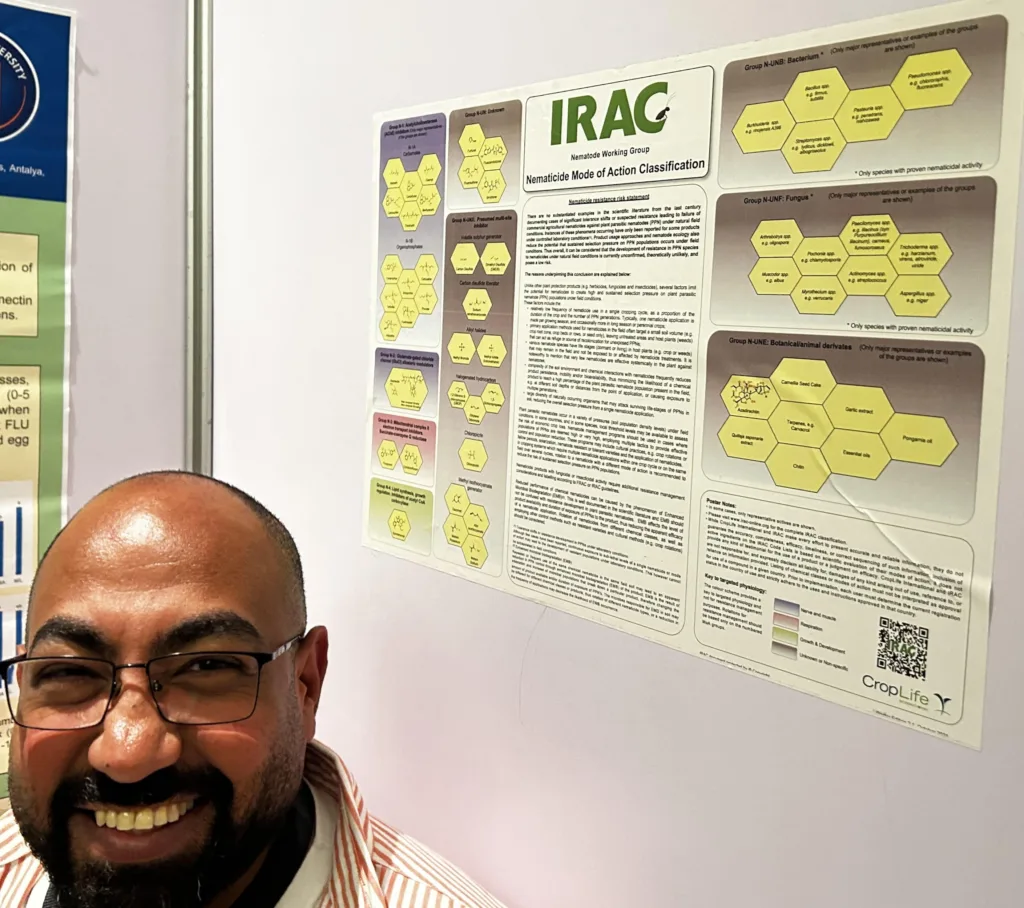
Tamer Victor, Corteva Agriscience Egypt -
57th IRAC International Meeting, 14-17th March 2023, Japan
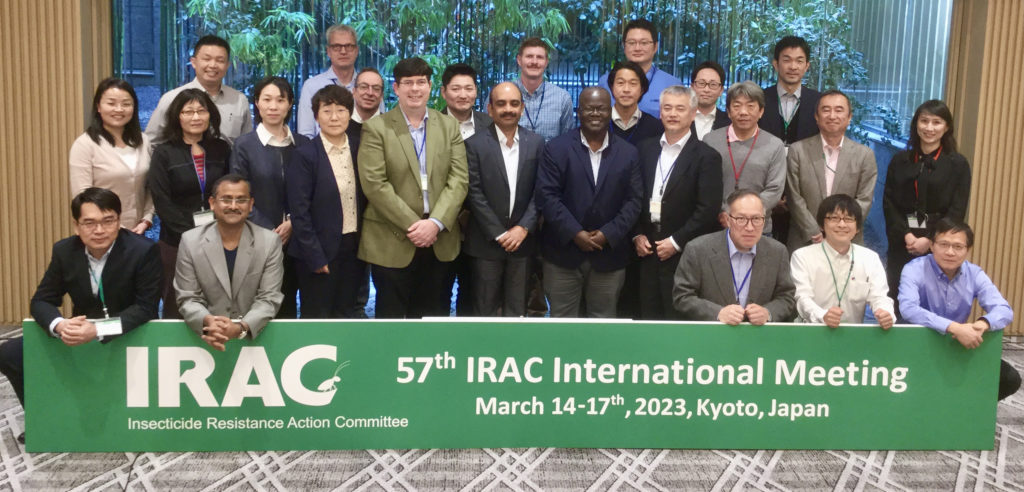
The 57th IRAC International Meeting was held in conjunction with IRAC Japan and IRAC Asia in Kyoto. This incorporated a visit to the Annual Meeting of Japanese Society of Applied Entomology and Zoology in Osaka where IRAC presentations were given in a seminar sponsored by the Japan Crop Protection Association on 14th March. Further meetings took place during the week as follows:
- 15th March: Meeting of the IRAC Executive and Crop Protection teams
- 16th March: Seminar at Kyoto university followed in the afternoon by meetings with IRAC Japan
- 17th March: Focus on IRAC Asia with presentations and discussion with various Country Teams
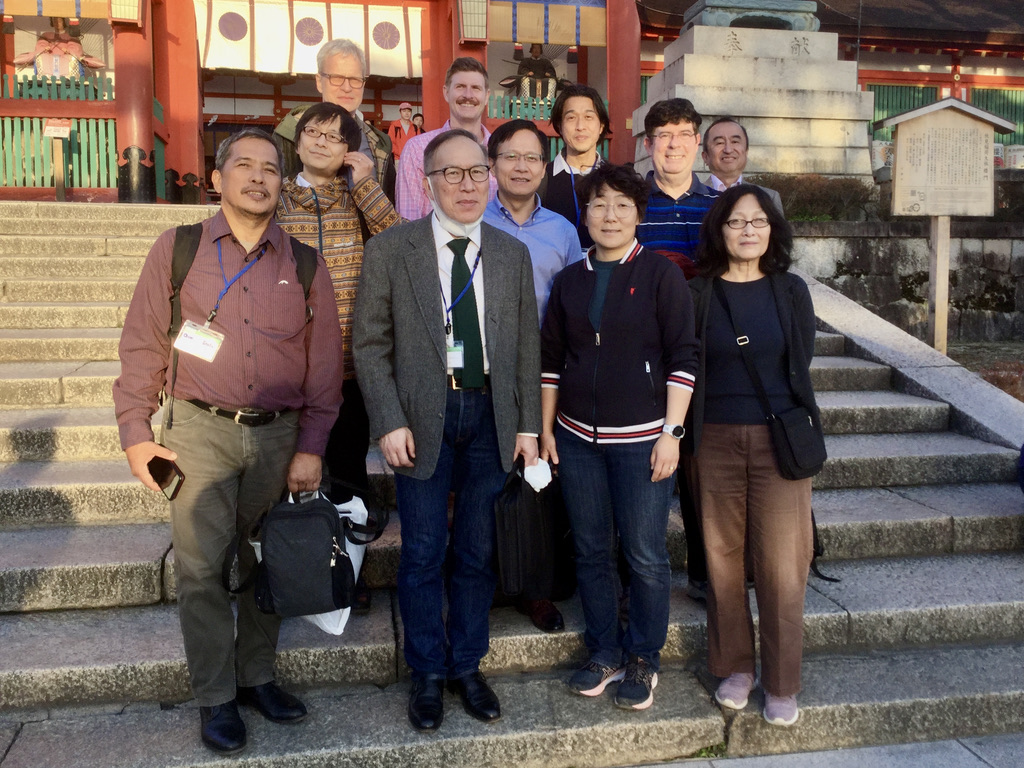
-
Latest updates to the MoA Classification
New versions (10.5, March 2023) of the IRAC MoA resources have just been released and posted on the website. The changes include the following updates:
- Group 29: Renamed to “Chordotonal organ nicotinamidase inhibitors”.
- Group 36: A new MoA Group which contains the active Dimpropyridaz, and is named “Chordotonal organ modulators – undefined target site”.
- Dicloromezotiaz, previously, in Appendix 6 (active ingredient pending registration), has been moved to Group 4E, Mesoinics, within Group 4, “Nicotinic acetylcholine receptor (nAChR) competitive modulators”.
- The new peptide, U1-AGTX-Ta1b-QA, has been classified as “Unknown or uncertain MoA – subgroup UNP (peptides of unknown or uncertain MoA)” and has been added to the Classification Scheme, Appendix 6, pending registration.
The updated resources, available for download from the IRAC website, are:
-
New IRAC, HRAC and FRAC Global Resistance Management Mode of Action App
The new Global Resistance Management (GRM) Mode of Action App, released earlier this year by the Resistance Action Committees (IRAC, HRAC FRAC), has just been updated with additional features. The App combines the information on the Resistance Action Committee’s standalone Mode of Action Apps into one application for ease of access by the user. The individual IRAC, FRAC and HRAC Mode of Action Apps are still available and all applications can be downloaded from the Apple App and Google Play stores.
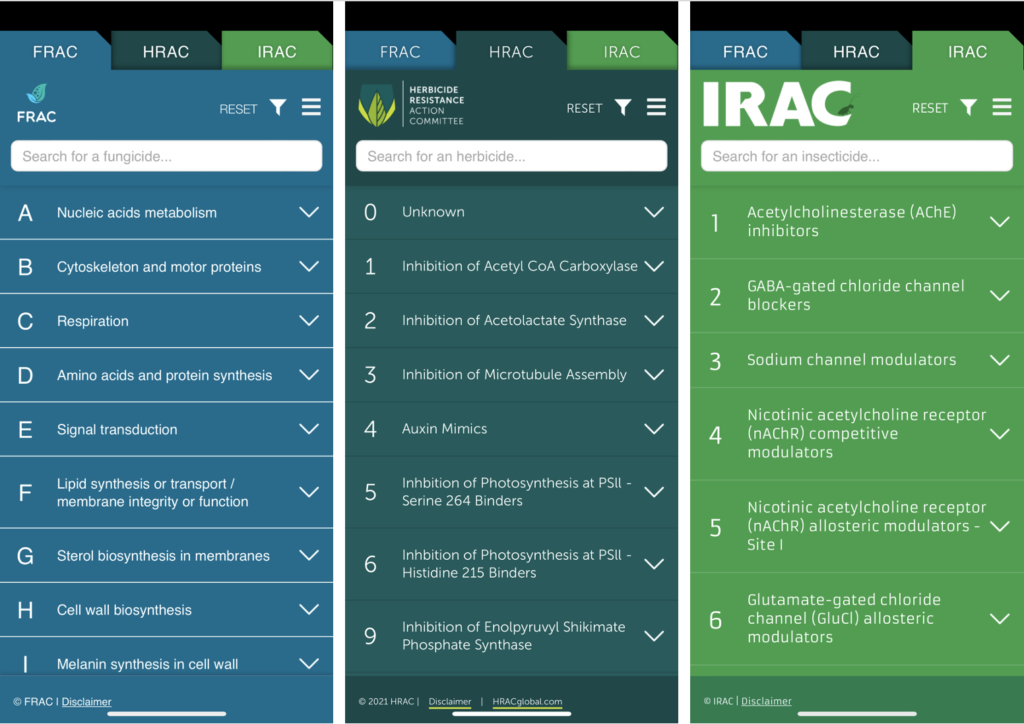
-
IRAC Vietnam takes up the challenge to improve farmer IRM
For farmers in Vietnam, the agricultural environment is very dynamic. Changes in weather patterns, consumer behavior, the availability of labor, the availability of crop protection products, and the crop pest patterns, require farmers to adjust their agricultural practices to sustain and improve both crop quantity and quality. Badly adopted cultivation practices can lead to increasing problems with insecticide resistance.
Farmers in Vietnam (VN) are experiencing increasing insecticide resistance, rendering their efforts in crop protection inefficient even though they can choose between more than 1500 different insecticide brands, which represent over 600 different active ingredients. If the offer is so diversified, why are farmers running into trouble? The key question is, how to decide which product to use? Interviews with farmers reveal that most believe that they should rotate different products, for insecticide resistance management (IRM).
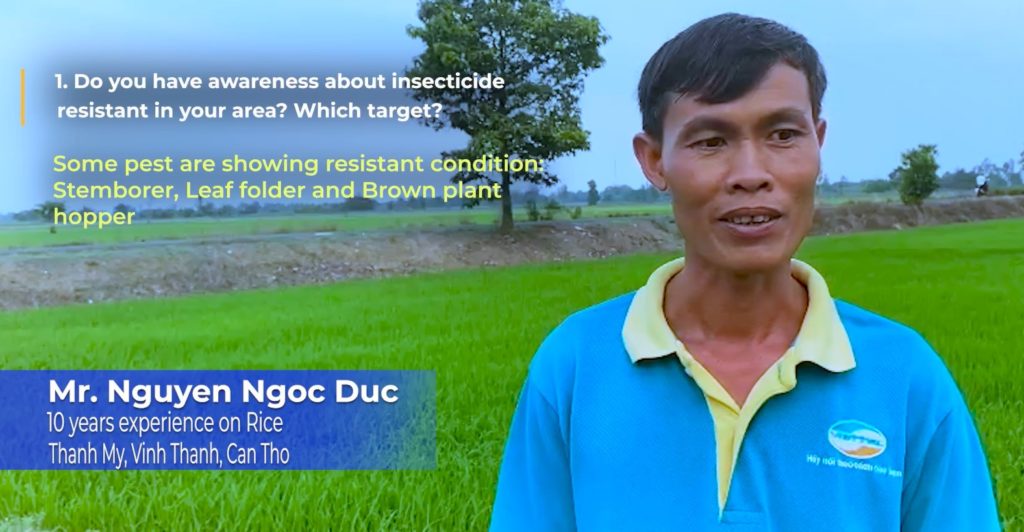
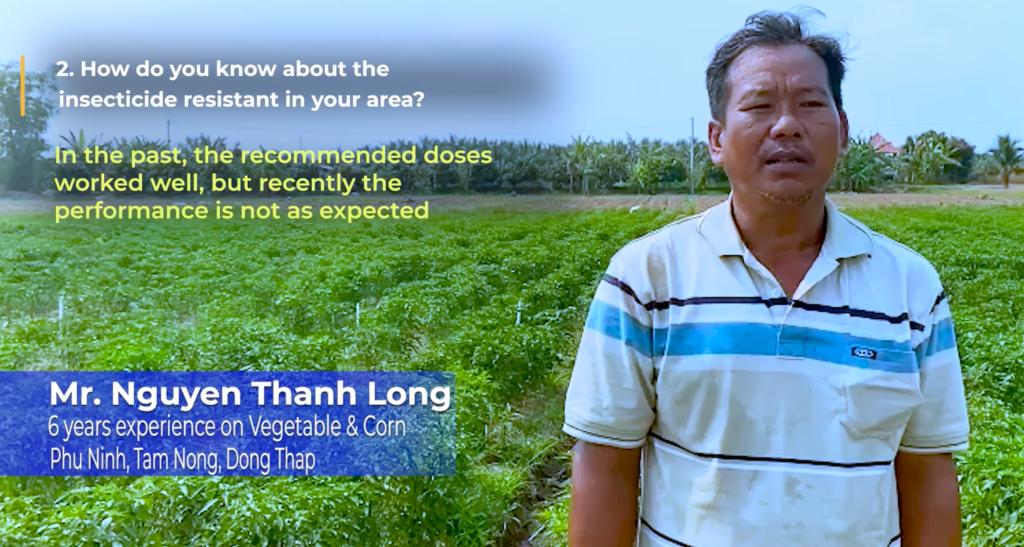

This shows that farmers are clearly lacking available, essential IRM guidance.
- For rotation, farmers need to know how to select best-fit products, among dozens of hundreds of available insecticides brands, to use.
- Product rotation should be associated with insect generations and the product’s mode of action (MoA) which is indicated by IRAC group numbers.
- The product MoA should be printed on product labels in a standardized manner, including essential information on IRM, as proposed by IRAC and CropLife International. So far, MoA labelling is still only optional for VN manufacturers.
IRAC VN, in association with CropLife VN, are engaging to help farmers to better manage insecticide resistance in the future and planning to:
- be fully committed to comply with IRAC guidance (MoA icon, IRM statement)
- encourage all VN pesticide manufacturers to implement MoA labelling practice
- engage the VN Government agency to make MoA labelling mandatory
- create online IPM, RM, RAC guidance resources in Vietnamese
- establish train-the-trainer programs together with CropLife VN, government agencies, and other stake holders to increase IRM awareness and practice
-
IRAC MoA Group 30 IRM Guidelines Published
IRAC MoA Group 30 insecticides (GABA-gated chloride channel allosteric modulators) are a new class of insecticide chemistry with first registrations in agriculture made during 2018. They represent a valuable resource for the control of insect and mite pests in many agricultural and horticultural markets and therefore it is considered essential to develop IRM guidelines to maintain their effectiveness through sustainable use.